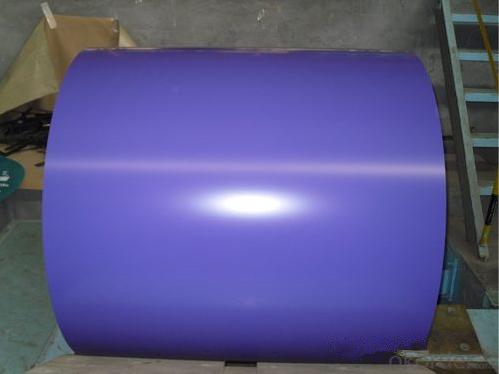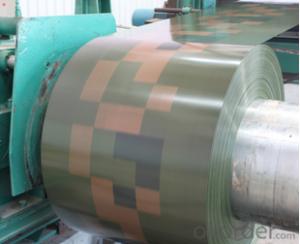Galvanized or Alu-zinc Steel PPGI/Color coated steel plate/Cold Rolled/PE
- Loading Port:
- Tianjin
- Payment Terms:
- TT OR LC
- Min Order Qty:
- 25 m.t.
- Supply Capability:
- 50000 m.t./month
OKorder Service Pledge
OKorder Financial Service
You Might Also Like
1.Application of Galvanized or Alu-zinc Steel PPGI:
Construction | Outside | Workshop, agricultural warehouse, roof panel, wall panel in steel structure in warehouse,corrugated roof |
| Inside | factories exhibition hall,doorcase, light steel roof structure, folding screen, elevator, stairway | |
Electrical appliance | Refrigerator, washer, switch cabinet, instrument cabinet, air conditioning, micro-wave oven, bread maker | |
Furniture | Central heating slice, lampshade, chifforobe, desk, bed, locker, bookshelf | |
Carrying trade | Exterior decoration of auto and train, clapboard, container, isolation lairage, isolation board | |
Others | Writing panel, garbage can, billboard, timekeeper, typewriter, instrument panel, weight sensor, photographic equipment | |

2.Features of Galvanized or Alu-zinc Steel PPGI:
With excellent cold-rolling steel strips as a base material, it has the advantages of
* Good manufacturing performance
* High impact resistance
* Uniform plating thickness
* High adhesive force
* No peeling after forming
* High corrosion resistance
3.Details of Galvanized or Alu-zinc Steel PPGI:

Base Material | Al-Zn Galvanized Steel Coil.SGLCC |
Top Side | 15-25 microns |
Back Side | 5-8 microns |
Width | 700-1250mm |
Thickness | 0.3-1.0mm ,thickness tolerance: +/- 0.02mm |
Al-Zn Coating | 30-150g/sq.m |
Coil ID | 508mm&610mm |
Color | All RAL Color,or be customized |
Spangle | Regular/Zero/Big |
4.Galvanized or Alu-zinc Steel PPGI Image:

Packaging Details:Standard seaworthy packing
Delivery Detail: within 15-30 days

Packing &Delivery
Packing detail: 1. Metal Band Strapping
2. Outside Diameter Ring
3. Label 4. Protective Steel Sheet
5. Water and Rustproof paper 6. Steel Sheet
5.FAQ
We have organized several common questions for our clients,may help you sincerely:
①How about your Warranty?
Warranty: 1-Year for the whole light. Warranty is based on correct storage, installation, using and maintenanc
②How to guarantee the quality of the products?
We have established the international advanced quality management system,every link from raw material to final product we have strict quality test;We resolutely put an end to unqualified products flowing into the market. At the same time, we will provide necessary follow-up service assurance.
③How long can we receive the product after purchase?
In the purchase of product within three working days, We will arrange the factory delivery as soon as possible. The pecific time of receiving is related to the state and position of customers.Commonly 7 to 10 working days can be served.

- Q: What are the challenges in coil recoiling for high-strength steel?
- Coil recoiling for high-strength steel presents several challenges that must be addressed. To begin with, high-strength steel possesses heightened hardness and strength, rendering it more difficult to coil than regular steel. The greater tensile strength of high-strength steel places additional strain on the recoiling machinery, potentially resulting in damage or machinery failure. Moreover, high-strength steel tends to exhibit reduced ductility, meaning it is less able to endure deformation without fracturing. Recoiling high-strength steel coils necessitates meticulous handling and control to prevent excessive bending or stretching that could lead to material breakage or cracking. Another obstacle arises from the shape memory effect of high-strength steel, whereby the material returns to its original shape after being deformed. Although this property can be advantageous in certain applications, it complicates the recoiling process as the steel coil resists reshaping into a new coil form. Furthermore, high-strength steel often possesses a more intricate microstructure compared to regular steel, characterized by various phases and grain boundaries. This complexity can heighten the difficulty of the recoiling process, as it can impact the material's mechanical properties and response to deformation. Finally, the surface finish of high-strength steel coils is crucial for many applications. Recoiling can introduce surface defects, such as scratches or marks, which may impair the functionality or appearance of the final product. Consequently, maintaining a high-quality surface finish during the recoiling process poses a significant challenge. In summary, the challenges associated with coil recoiling for high-strength steel encompass increased stress on recoiling equipment, reduced ductility, the shape memory effect, complex microstructure, and the need for a high-quality surface finish. Overcoming these challenges necessitates specialized equipment, precise control, and careful handling to ensure the integrity and quality of the recoiled high-strength steel coils.
- Q: Can you use regular welding rods when welding stainless steel?Thank you.
- You would use stainless steel rod. I have used stainless safety wire that you can buy at the hardware store or Harbor Freight. (Assuming you are TIG welding). I have found that for small jobs it works quite well.
- Q: How are steel coils used in the manufacturing of hydraulic cylinders?
- Steel coils are used in the manufacturing of hydraulic cylinders as the raw material for constructing the cylinder's body. The coils are cut and shaped into the desired size and shape, and then welded or formed into the cylinder's outer shell. This steel construction provides strength and durability to the hydraulic cylinder, allowing it to withstand high pressure and heavy loads.
- Q: Can steel coils be coated with anti-fingerprint materials?
- Yes, steel coils can be coated with anti-fingerprint materials. These materials are designed to reduce the visibility of fingerprints and smudges on the surface of the steel, providing a cleaner and more aesthetically pleasing appearance.
- Q: What kind of steel should be used for constructing a steel building?
- In steel construction there are many standard types of steel used. Lots of different factors contribute to your steel choice. How tall is the building? Are you in an earthquake zone? Steel for the columns, or the beams? You might want to refer to the American Institute of Steel Construction for more information, they are the governing body in the US.
- Q: I am looking at website on google based on the terms structural steel fabrication and simply steel fabricationI know that there must be a difference between the two terms, but it seems that many website authors use the two terms interchangeably.Do you know the key differences between the two terms?
- Structural steel is steel construction material, a profile, formed with a specific shape or cross section and certain standards of chemical composition and strength. Structural steel shape, size, composition, strength, storage, etc, is regulated in most industrialized countries. Fabrication, when used as an industrial term, applies to the building of machines, structures and other equipment, by cutting, shaping and assembling components made from raw materials. Small businesses that specialize in metal are called fab shops. Steel fabrication shops and machine shops have overlapping capabilities, but fabrication shops generally concentrate on the metal preparation, welding and assembly aspect while the machine shop is more concerned with the machining of parts.
- Q: I was wondering if anyone knew the grade/type of steel for this product. I'd like to use it as stock for a knife blade, but would like to know the specs so I can determine if it is suitable and, if so, how best to heat treat it.Thanks.PS: I know it isn't stainless, but that leaves a lot of other steel types.
- That isn't good steel for a functional knife. But that doesn't mean its useless to you. It makes for cheap and easier practice. Its a good idea to screw up a couple of cheap pieces of steel before you start buying expensive blanks. The mild steel will be easier to work with too, so its a good start towards being able to shape a harder piece. Practice a few times withcheap, soft steel. Get to know your tools. At some point the steel will be limiting your abilities. Then its time to start buying the expensive stuff. Steel can be hardened by introducing carbon when the steel is above a certain temp. But its difficult and a little unsafe in uncontrolled conditions. Really not worth bothering with.
- Q: How are steel coils used in the manufacturing of HVAC systems?
- Steel coils are used in the manufacturing of HVAC systems as they serve as the main component of heat exchangers, which are responsible for transferring heat between the air and refrigerant. The steel coils provide a sturdy and durable structure for the heat exchanger while also allowing for efficient heat transfer, ensuring optimal performance in heating and cooling processes.
- Q: nylon sounds alot better but i want to keep the acoustic i have now. Is it proper to put nylon on an acoustic guitar meant for steel strings?
- As others have said, it is not recommended because the steel-string neck is meant to handle the tension of steel strings, and nylon strings have much less tension. It won't do any immediate damage, especially if you loosen your truss rod a full turn or two to compensate. But if you keep the nylon strings on for too long your neck may twist or warp irreversibly. I don't recommend doing it, but if you want to try it anyway, get nylon strings with ball ends (Martin makes Darco strings with ball ends, and there are also Black Diamond strings with ball ends). Putting nylon strings on a steel-string guitar is not nearly as bad as putting steel strings on a nylon-string guitar -- whatever you do, don't do that!
- Q: What is the role of steel coils in the manufacturing of storage racks?
- Steel coils play a critical role in the manufacturing of storage racks as they provide the raw material for creating the structural components of the racks. These coils are typically transformed through processes like cutting, bending, and welding to form the various parts of the racks, such as the upright frames, beams, and shelves. The strength and durability of steel make it an ideal material for storage racks, ensuring they can withstand heavy loads and provide long-lasting support for storing items efficiently.
Send your message to us
Galvanized or Alu-zinc Steel PPGI/Color coated steel plate/Cold Rolled/PE
- Loading Port:
- Tianjin
- Payment Terms:
- TT OR LC
- Min Order Qty:
- 25 m.t.
- Supply Capability:
- 50000 m.t./month
OKorder Service Pledge
OKorder Financial Service
Similar products
Hot products
Hot Searches
Related keywords






























